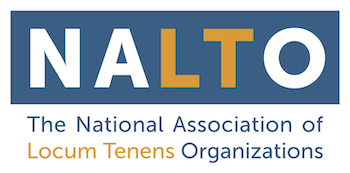Automation Creating Effective Contact Solutions in Healthcare
Ensuring patient satisfaction is a critical aspect of healthcare, but it is also time consuming. Automated solutions are helping physicians effectively communicate with patients.
Patient satisfaction is essential to the success of any healthcare practice. In a world where physicians experience extreme time constraints, ensuring the satisfaction of each patient can seem like an impossible task. Fortunately, healthcare companies are now creating solutions that allow practices to effectively communicate with patients without the stress of a time crunch.
What Makes Patients Feel Satisfied?
Patients use several criteria when assessing their satisfaction levels. Patients often consider:
- Wait time for an appointment;
- Wait time while in the office;
- Time spent with the physician;
- Availability of resources such as telemedicine;
- Helpfulness of staff; and
- Overall practice culture.
Recent studies have shown, however, that the most important aspect of patient satisfaction is actually physician empathy. When visiting a doctor, many patients experience complicated emotions regarding their health. Patients want to know that their physicians understand their worries and concerns. As such, when a doctor employs empathetic practices they can expect to see an increase in patient satisfaction.
Why Patient Satisfaction is Important
Satisfied patients can be a boon to any healthcare organization. The benefits associated with high patient satisfaction include:
- Increased levels of trust between patient and physician, which can lead to more effective communication, less patient anxiety, increased patient adherence to treatment plans, and better clinical outcomes;
- Increased ability to attract and retain patients via enhanced reputation;
- Increased interest from health insurance plans and regulatory agencies who prefer to work with practices with high patient satisfaction;
- Decreased cost of potential malpractice suits; and
- Decreased cost to Medicaid and Medicare for patient re-admittance to hospitals.
All of these factors can help healthcare organizations become more profitable in both the short and long-term. Physicians also take pride in their practice beyond a financial standpoint. Thus, increased patient satisfaction means that physicians are creating effective doctor-patient relationships, which can provide satisfaction for physicians, as well.
How to Increase Patient Satisfaction Without Compromising Time
Despite the benefits associated with high patient satisfaction, many physicians simply do not have the time to perfect their empathy techniques. Furthermore, as visits get increasingly shorter there may be little time within each appointment to provide the empathy that patients are looking for. In fact, physicians are typically scheduled to see patients every 15 minutes. Between examination, assessment, diagnoses, and creation of a treatment plan, this leaves little time for physicians to connect emotionally with patients.
Since patient satisfaction is of key importance to healthcare organizations, many companies have created automated solutions to help physicians provide the empathy that their patients desire. These solutions include automated yet personalized email and phone call follow-ups to patients. Despite the slightly impersonal touch, initial studies suggest that these calls and emails did, in fact, improve patient satisfaction levels. The vast majority of patients reached by these methods reported an enhanced view of their doctors.
These outreach methods help physicians connect with patients of varying levels of literacy and technological competency. The content of the message is designed to sound empathetic, while also giving patients the opportunity to provide feedback (depending on the type of services rendered). This customization has helped give patients the level of personal care and attention they desire without sacrificing time or quality of services.
While many physicians view these automated solutions as an effective addition to their practice, they also feel that it is not a replacement for face-to-face contact. There is no doubt, however, that these new solutions provide benefits to healthcare organizations on a variety of levels. Though the practice of empathy via automation is relatively new, it can become one of the many important tools that physicians use to care for patients.
Another effective tool that healthcare organizations can use is Locum Tenens work. Locum Tenens physicians can also increase patient satisfaction by helping to provide continuous care to organizations that may have a gap in their current services. Physicians who participate in Locum Tenens work can also gain experience with providers who may already offer these innovative automated solutions. For more information, please contact the National Association of Locum Tenens Organizations today.
